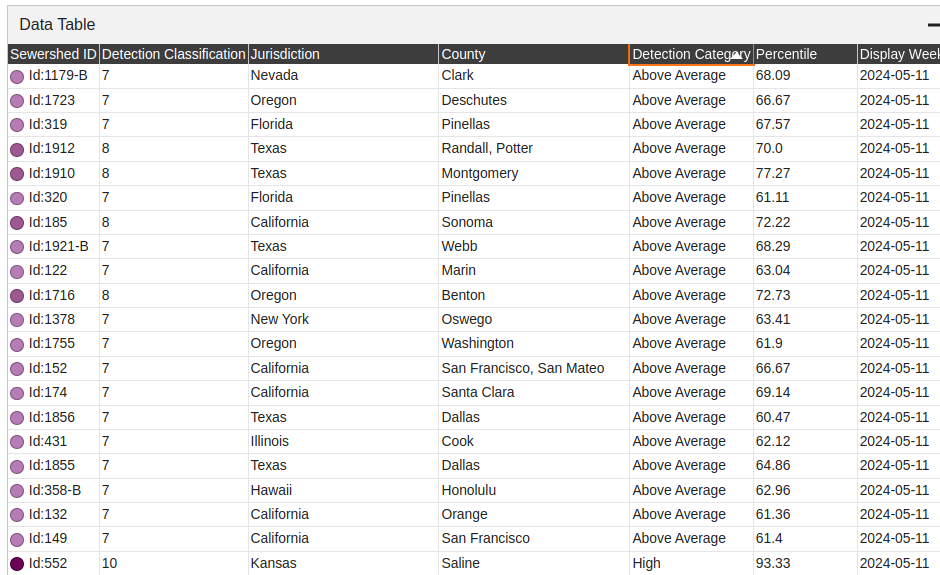#18,081
The CDC has published an update of their influenza A wastewater surveillance dashboard, which they unveiled early last week. Once again, this surveillance only checks for influenza A, and does not parse out novel flu subtypes like H5N1.
Although there are 689 wastewater treatment plants in their system, only 281 plants have submitted usable data over the past 2 weeks. Last week, that number was cited as 218 WWTPs, although it appears that more reports were added over the past 7 days.
We know this because last Friday, 11 plants reported above average levels of influenza A, but a look back at that data set finds that number has increased to 21.
This week's data currently shows 14 WWTPs above average, but that number could rise as more data comes in, meaning comparisons to last week's numbers will need to wait until late next week.
The CDC's update follows:|
Influenza A Virus Wastewater DataUpdated May 23, 2024
Main Findings from Wastewater SurveillanceDuring the two most recent weeks, (May 5, 2024–May 18, 2024), a total of 281 of 689 sites reported data meeting criteria for analysis for influenza A virus for both weeks or for either week, and 3 (1%) sites from 2 states were at a high level (>80th percentile compared to levels recorded at that site between October 1, 2023 and March 2, 2024).
Wastewater and the Current Outbreak of Influenza A (H5N1) in birds, cattle, and other animals:Current wastewater monitoring methods detect influenza A viruses but do not determine the subtype. This means that avian influenza A(H5N1) viruses can be detected but would not be distinguished from other influenza A virus subtypes.
Wastewater testing cannot determine the source of the influenza A virus. It could come from a human or from an animal (like a bird) or an animal product (like milk from an infected cow).
Public health officials at CDC and state and local health departments are monitoring these data. For areas where influenza A virus levels in wastewater are high, CDC works with relevant partners to better understand the factors that could be contributing to these levels.
Efforts to monitor influenza A virus activity using wastewater data are likely to evolve as the methodologies and interpretation are evaluated and refined.
For the latest information on H5N1, and what you can do to protect yourself, visit H5N1 Bird Flu: Current Situation. For the latest information on influenza activity in people, visit the Weekly U.S. Influenza Surveillance Report.
- Number of Wastewater Sites with Data Meeting Criteria for Analysis Reporting Current High Influenza A Levels in Recent Two Weeks: 3 (1% of Total Sites)
- Number of Sites with Data Meeting Criteria for Analysis Reporting Influenza A Wastewater Data in Past Two Weeks: 281



